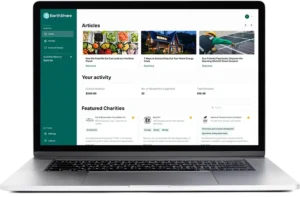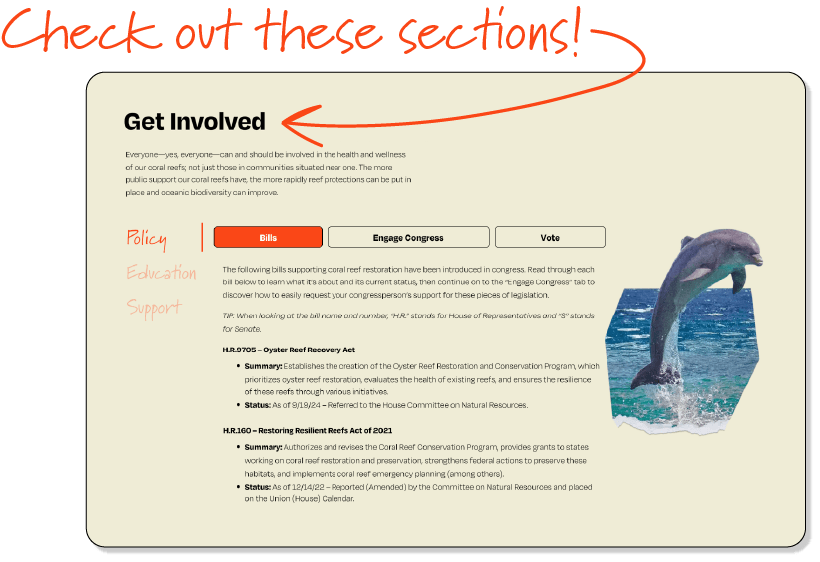SOLUTION
Sustainable Agriculture
Achieving 30×30 by addressing agriculture
Created in partnership with
National Young Farmers Coalition
What is sustainable agriculture?
Sustainable agriculture is the use of harm-reducing farming practices to protect the environment, our natural resources, and the health and well-being of all people now and for generations to come.
This work includes improving soil health, managing freshwater, minimizing pollution, increasing carbon sequestration (storage), building resilience to extreme temperatures and weather, and upholding biodiversity as a critical need for environmental and agricultural health.1“What Is Sustainable Agriculture?” Union of Concerned Scientists ≫
Farming and Climate Change
Farmers feel the impact of climate change every day, from fluctuations in precipitation to rising global temperatures.2“How climate change threatens U.S. crop production,” Environmental Defense Fund ≫This is especially true for smaller-scale farms, particularly those owned by Black, Indigenous, and People of Color (BIPOC) farmers. Read this perspective from California farmer Scott Chang-Fleeman.
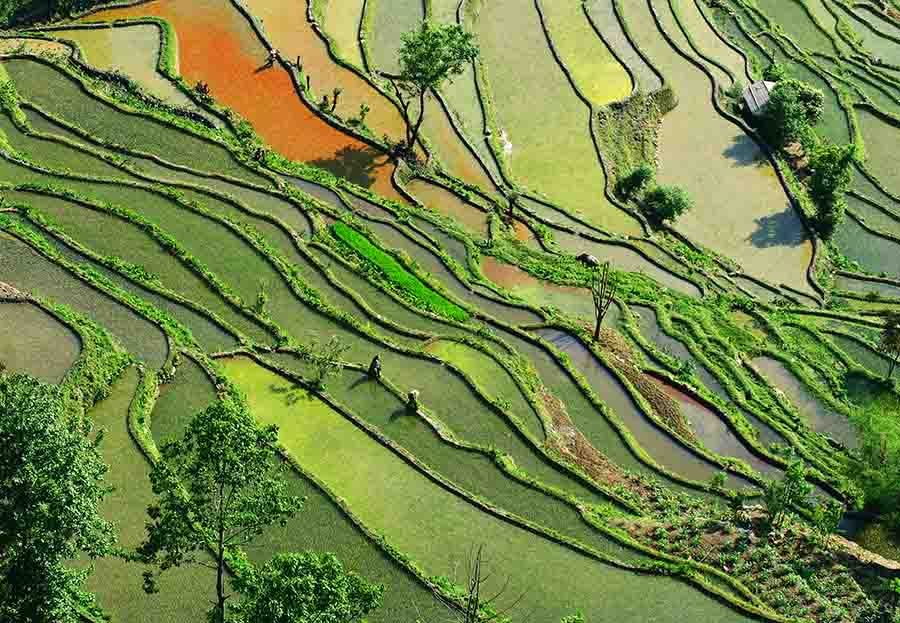
Traditional Indigenous Knowledge
Sustainable and regenerative agriculture practices have their roots in Indigenous practices dating back millennia. For instance, the Maya of present-day Mexico and Central America used cleverly designed irrigation systems and crop rotation to maintain healthy soil. Likewise, the Honghe Hani Rice Terraces of China (above), built over the past thousand years by the local Hani people, use rainfall and the manipulation of the land’s topography to naturally irrigate crops. (IMAGE: JialiangGao/Wikimedia)3“The Indigenous Roots of Regenerative Agriculture,” Rainforest Alliance »; “Ancient Maya used sustainable farming, forestry for millennia,” University of Cincinatti »; “Honghe Hani Rice Terraces,” UNESCO »
Sustainable Agriculture and 30x30
Agriculture uses nearly half of all global habitable lands, making it one of the most environmentally impactful industries in the world.4“Land Use,” Our World in Data ≫
If we want to protect biodiversity and preserve 30% of our terrestrial lands and fresh and marine waters by 2030, we must address current agricultural practices, like fossil fuel dependency and monocropping, which are depleting nutrients in our soils, putting stress on our freshwater supply, and reducing biodiversity.
By transitioning to sustainable agriculture practices on a large scale, we will reduce land degradation and ecosystem impact, improve biodiversity conservation and resource management efficiency, increase natural disaster resilience, lower the carbon footprint of agriculture, and provide food security for a far greater number of people.
Sustainable Agriculture: The Low Down
Learn about the who, where, and when of leveraging sustainable agriculture for 30×30 goals.
- The Who
- The Where
- The When
Agriculture affects everyone, and a sustainable agriculture system will provide access to healthier foods, lands, and ecosystems for all people. But who will be the ones to put these practices into place? The answer spans many responsible parties:
- Farmers
- Agricultural associations
- Food and crop transporters
- Food industry stakeholders (e.g., restaurants, packed goods manufacturers, grocery stores)
- Government agencies
- Land-grant universities
- Extension offices
- Value chain and supply chain stakeholders
- Agricultural corporations
- Lobbyists and politicians
Each of these responsible parties plays a critical role in the agricultural industry. They grow the food we eat, bring it to our tables, lobby and implement changes to how our food is grown and processed, and provide farmers with the critical resources needed to implement new technologies, methods, and strategies.
But how do we determine who is responsible for what?
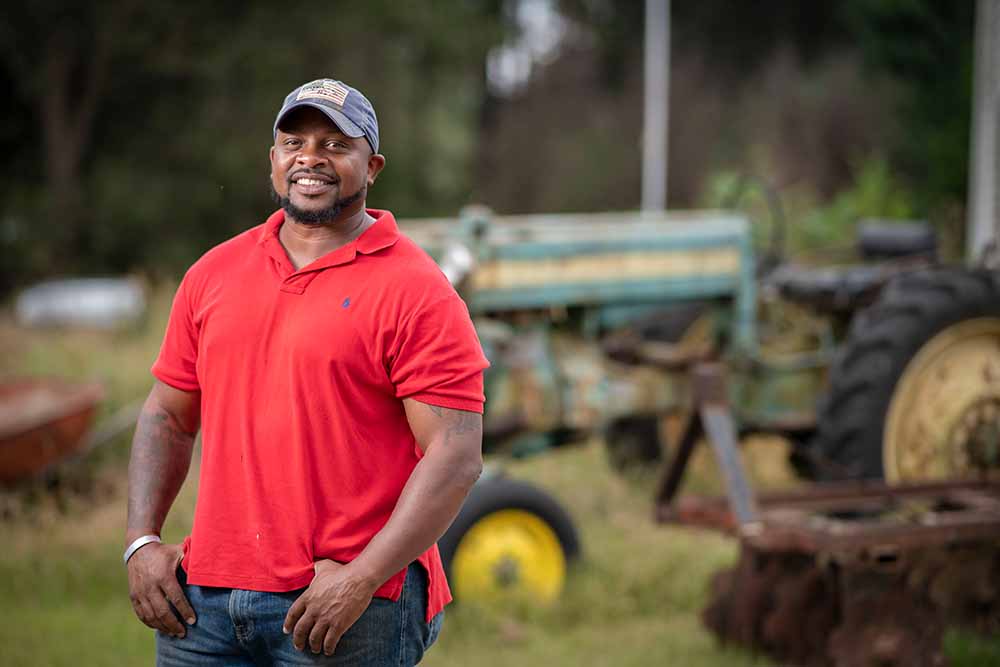
Helping the Next Generation
Currently, divides between small farmers and corporate agriculture businesses (“agribusiness”) are forcing new, young, and BIPOC farmers out of the market due to lack of access to agricultural lands.5Illinois FarmLink, a program of The Land Connection, is a great example of keeping agricultural lands in the hands of families and farmers through innovative networking.Young and BIPOC farmers need more federal support to implement and grow climate-smart practices on their farms. Amazingly, 97% of young farmers surveyed by National Young Farmers Coalition identified their growing practices as “sustainable.”6Building a Future with Farmers, National Young Farmer Survey ≫As a result, sustainable agriculture solutions should prioritize and empower these core groups. (IMAGE: Jon Jackson of Comfort Farms, Preston Keres/Flickr)
How do we prioritize sustainable agriculture? The answer has two parts:
- Existing farms relying on contemporary fossil fuel-based methods
- New farms or existing farms with new farmers
Existing Farms
For existing farms that rely on fossil fuel-powered machinery and traditional methods of irrigation and fertilization, this transition will take longer but is no less important. Existing farmers require education, funding, and support to transition away from current practices. This must be done equitably, justly, and without villainizing farmers who do currently use these methods.
However, it’s important to note that most major polluters in this cohort are corporations and not independent farmers.
In order to truly address fossil fuel usage at this level, improvements to policy and regulations must be made to force change. Governments around the world need to stop providing subsidies to fossil-fuel-using agricultural corporations and, instead, support the farmers who are putting sustainability and biodiversity first.
New Farms
Farmers new to the industry or those inheriting an existing farm are ideal candidates for integrating sustainable methods. Establishing these methods early significantly reduces the need to rely on fossil fuels and pesticides and encourages earth-friendly agricultural practices.
We have already seen the benefits of sustainable agriculture throughout history. Indigenous Peoples and their development of sustainable and regenerative agriculture played a huge role in stewarding the immense biodiversity of North America. (Proof that these practices really work!)
Today, sustainable agriculture is being adopted on farms across America and around the world—and we’re seeing positive results.
To make significant and timely change, we need to increase the rate and scale at which these practices are being adopted. As a result, we’re likely to see the following outcomes:
- IMMEDIATE | Significantly reduced carbon emissions, reduced effects of climate change on farming and ranching, and increased industry accessibility for new, young, and BIPOC farmers
- LONG-TERM | Creation of carbon sinks, improved overall land and water health, establishment of protections for dedicated agricultural lands, increased biodiversity, and improved agricultural efficiency
Sustainable Agriculture at Work
American Farmland Trust | Umoja Na Uhuru (“Unity and Freedom”) World Farm in Boise, Idaho, supports a community program that grows fresh vegetables for local families using sustainable methods like hand tilling and drip irrigation. Read More >>>
Dryland Agroecology Research (DAR) & Zero Foodprint | Two EarthShare Nonprofit Partners working together, DAR (with a grant from Zero Foodprint) is revitalizing agriculture properties in Colorado by planting trees and native seeds, implementing sustainable livestock practices, and applying compost to transform soil health. Read More >>>
One Earth | In Cambodia, a country that faces extreme poverty and regularly sees the impacts of climate change in the forms of floods, droughts, and extreme temperatures, The Face-to-Face Project educates women on the development of sustainable gardens to help them provide fresh, nutritious food for their families while avoiding dangerous, physically demanding day labor. Read More >>>
Washington Farmland Trust | Since 2016, the Advancing Farm Sustainability program by Washington Farmland Trust has supported 22 projects that have improved soil health throughout the state, preserved water through sustainable irrigation, and increased biodiversity and healthy wildlife habitats. Read More >>>
Get Involved
EVERYONE can help sustainable agriculture, and strong public support is one of the fastest ways to set change in motion, especially in the face of significant obstacles created by rapidly changing federal policy.
Explore below to learn more!
- Policy
- Education
- Support
- Bills
- Engage Congress
- Vote
The following bills supporting open spaces have been introduced in congress. Read through each bill below to learn what it’s about and its current status, then continue on to the “Engage Congress” tab to discover how to easily request your congressperson’s support for these pieces of legislation. (When looking at the bill name and number, “H.R.” stands for House of Representatives and “S” stands for Senate.)
H.R. 8676 – EMIT LESS Act of 2024
- SUMMARY: This bill establishes the development of enteric (intestinal) methane mitigation product testing and training/conservation programs for managing livestock methane.
- STATUS: As of 6/11/2024 – Bill introduced in House and referred to the House Committee on Agriculture.
S. 4193 – Habitat Connectivity on Working Lands Act of 2024
- SUMMARY: This bill makes important amendments to the Food Security Act of 1985 that better incorporate wildlife and conservation considerations as they relate to farming and livestock practices.
- STATUS: As of 4/18/2024 – Read twice, and referred to the Committee on Agriculture, Nutrition, and Forestry.
- SUMMARY: This bill reforms existing practices to increase conservation, improve safety nets for farmers and ranchers, and invest in regional food systems among other initiatives.
- STATUS: As of 3/28/2023 – Introduced to the House and referred to the following committees: Agriculture, Ways and Means, Education and the Workforce, Foreign Affairs.
Not sure who represents you in congress? Follow these quick steps to find your congressional representatives and how to contact them:
- Click here and input your home address, then click the search icon.
- Under the name of the representative you want to reach, look for the section titled “Contact.”
- To make a phone call, copy the phone number provided.
- To send an email (or other form of outreach), select the blue hyperlinked word “contact.”
- This will take you to a page with different methods for reaching your representative.
Your vote means something. It’s your chance to voice your support for the people and policies you think will make a positive difference in your community and across the country.
Register to Vote
Not yet registered to vote? Get started:
It’s super easy! All you have to do is:
- Select the state or territory you live in
- Start your online voter registration
When registering, make sure you have a valid form of identification. This could be your Driver’s License, State ID, and/or Social Security Number.
Find Your Voting Location
Are you a new voter? Have you moved recently? Or maybe you just want to double check you know where you’re going? Find your voting location:
Remind Others to Vote
- Text election reminders to friends and family
- Snap that “I Voted” selfie and share it with the world (this simple act has been shown to increase voter turnout by 4.1%)
- Help others create a voting plan
- Sign up for programs like When We All Vote to help educate others on the importance of voting, important deadlines, and more

- The Issues
- Advocate
- Keep Learning
Education is the first step in building public support for sustainable agriculture. Agriculture is one of the largest industries in America, accounting for more than 5% of our country’s total GDP, 1.7 million jobs, and most of our land use. This means that widespread change is going to be tough—especially when there is a lot of lack of public knowledge about how agriculture works, the harms of current practices, and how we can make the transition to sustainable without leaving today’s farmers behind.
Key concepts like monocropping, livestock and methane production, and soil health need to become part of America’s everyday language so the public can make educated decisions about their health and wellbeing. Unfortunately, most people are unfamiliar with sustainable agriculture practices.7“Consumer Perspectives on Regenerative Agriculture,” Food Insight ≫ We need to draw connections between things like soil health, pesticide usage, and food security. People need to be able to recognize that how we grow our food is just as important as what we grow.
More education is needed to get people on board with widespread sustainable agriculture adoption. Education also needs to be happening at the legislative level. Lawmakers with the power to support new and existing legislation should have a firm grasp of these basic concepts as well as the ongoing public support for change.
Share This Page
Help educate your network of friends, family and followers when you share this page and post about it on social media!
Explore Further
Interested in learning even more about the importance of sustainable agriculture? We’ve compiled a list of key resources to help you move forward on your learning path.
Experts
Meet the professionals fighting for sustainable agriculture.
- National Young Farmers Coalition
- American Farmland Trust
- Washington Farmland Trust
- Zero FoodPrint
- Rodale Institute
Learning Hubs
Dive deeper into the topic with more educational tools.
- USDA National Agriculture Library
- Ag Literacy Hub | American Farm Bureau Foundation for Agriculture
- Sustainable Agriculture Research & Education Program | UC Davis
- Agriculture and Sustainability | EPA
- Regenerative Organic Aliance Resource Library
Other Resources
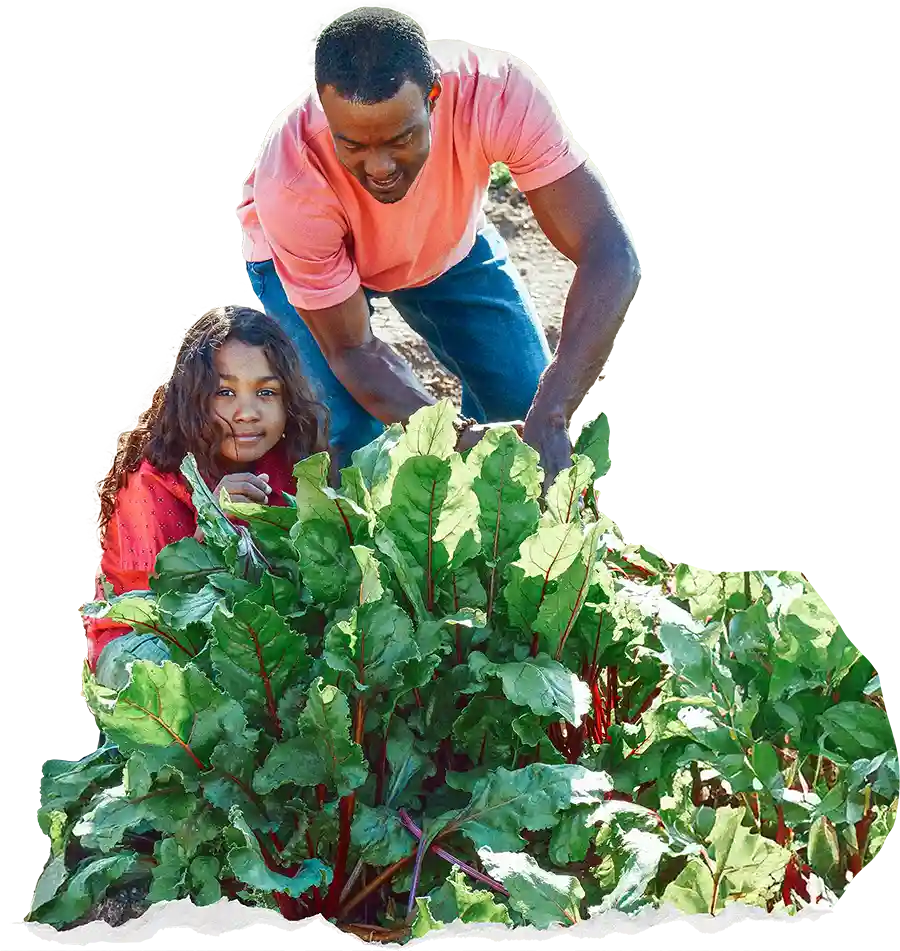
- Nonprofit Limitations
- Donate
- Volunteer
Ask any nonprofit in America (and around the world) what their greatest two challenges are, and they are very likely to say the same things: funding and capacity.
Nonprofits striving to implement and advance sustainable agriculture throughout the U.S. and around the globe are no stranger to this. That’s why your support—be it financial or through volunteer work—makes an enormous difference. By supporting an organization with your time and/or money, you are helping to increase their impact, expand their reach, and make it easier for good to be done for our planet.
Donate to Nonprofits
Meet the vetted EarthShare Nonprofit Partners making a difference for sustainable agriculture and donate to their cause!
- National Young Farmers Coalition | Supporting a more equitable future for U.S. agriculture and food systems in the face of climate change
- American Chestnut Land Trust | Preserving natural areas through land purchases, easements, no till, and permaculture techniques
- American Farmland Trust | Saving America’s farms and ranches through holistic, environmentally sound farming practices
- Gardeneers | Bringing justice to America’s food systems through customized school garden programs
- Illinois Environmental Council | Advancing equitable public policies and empowering communities to champion a healthy environment
- Natural Land Institute | Conserving land and natural diversity through land acquisition, management, and restoration
- One Earth | Addressing the climate through collective action on energy, conservation, and regenerative agriculture
- Rodale Institute | Expanding regenerative organic farming through research, training, and education.
- Savanna Institute | Laying the groundwork for widespread and scalable agroforestry throughout the midwestern U.S.
- Union of Concerned Scientists | Working to transform the U.S. food system through research, analysis, advocacy, and collaboration
- Washington Farmland Trust | Protecting threatened farmlands, making them accessible to a new generation of sustainable farmers
- Zero FoodPrint | Rallying the food and beverage industry to support regenerative agriculture and healthy, thriving farms
Attend Events & Volunteer
Check out events and volunteer opportunities happening online, across the country, and near you.
- American Farmland Trust | Events | National
- Natural Land Institute | Events | Illinois
- One Earth | Events | National
- Savanna Institute | Events | Illinois
- Washington Farmland Trust | Events | Washington
- Zero FoodPrint | Events | National

- Policy
- Education
- Support
- Bills
- Engage Congress
- Vote
The following bills supporting open spaces have been introduced in congress. Read through each bill below to learn what it’s about and its current status, then continue on to the “Engage Congress” tab to discover how to easily request your congressperson’s support for these pieces of legislation. (When looking at the bill name and number, “H.R.” stands for House of Representatives and “S” stands for Senate.)
H.R. 8676 – EMIT LESS Act of 2024
- SUMMARY: This bill establishes the development of enteric (intestinal) methane mitigation product testing and training/conservation programs for managing livestock methane.
- STATUS: As of 6/11/2024 – Bill introduced in House and referred to the House Committee on Agriculture.
S. 4193 – Habitat Connectivity on Working Lands Act of 2024
- SUMMARY: This bill makes important amendments to the Food Security Act of 1985 that better incorporate wildlife and conservation considerations as they relate to farming and livestock practices.
- STATUS: As of 4/18/2024 – Read twice, and referred to the Committee on Agriculture, Nutrition, and Forestry.
- SUMMARY: This bill reforms existing practices to increase conservation, improve safety nets for farmers and ranchers, and invest in regional food systems among other initiatives.
- STATUS: As of 3/28/2023 – Introduced to the House and referred to the following committees: Agriculture, Ways and Means, Education and the Workforce, Foreign Affairs.
Not sure who represents you in congress? Follow these quick steps to find your congressional representatives and how to contact them:
- Click here and input your home address, then click the search icon.
- Under the name of the representative you want to reach, look for the section titled “Contact.”
- To make a phone call, copy the phone number provided.
- To send an email (or other form of outreach), select the blue hyperlinked word “contact.”
- This will take you to a page with different methods for reaching your representative.
Your vote means something. It’s your chance to voice your support for the people and policies you think will make a positive difference in your community and across the country.
Register to Vote
Not yet registered to vote? Get started:
It’s super easy! All you have to do is:
- Select the state or territory you live in
- Start your online voter registration
When registering, make sure you have a valid form of identification. This could be your Driver’s License, State ID, and/or Social Security Number.
Find Your Voting Location
Are you a new voter? Have you moved recently? Or maybe you just want to double check you know where you’re going? Find your voting location:
Remind Others to Vote
- Text election reminders to friends and family
- Snap that “I Voted” selfie and share it with the world (this simple act has been shown to increase voter turnout by 4.1%)
- Help others create a voting plan
- Sign up for programs like When We All Vote to help educate others on the importance of voting, important deadlines, and more

- The Issues
- Advocate
- Keep Learning
Education is the first step in building public support for sustainable agriculture. Agriculture is one of the largest industries in America, accounting for more than 5% of our country’s total GDP, 1.7 million jobs, and most of our land use. This means that widespread change is going to be tough—especially when there is a lot of lack of public knowledge about how agriculture works, the harms of current practices, and how we can make the transition to sustainable without leaving today’s farmers behind.
Key concepts like monocropping, livestock and methane production, and soil health need to become part of America’s everyday language so the public can make educated decisions about their health and wellbeing. Unfortunately, most people are unfamiliar with sustainable agriculture practices.8“Consumer Perspectives on Regenerative Agriculture,” Food Insight ≫ We need to draw connections between things like soil health, pesticide usage, and food security. People need to be able to recognize that how we grow our food is just as important as what we grow.
More education is needed to get people on board with widespread sustainable agriculture adoption. Education also needs to be happening at the legislative level. Lawmakers with the power to support new and existing legislation should have a firm grasp of these basic concepts as well as the ongoing public support for change.
Share This Page
Help educate your network of friends, family and followers when you share this page and post about it on social media!
Explore Further
Interested in learning even more about the importance of sustainable agriculture? We’ve compiled a list of key resources to help you move forward on your learning path.
Experts
Meet the professionals fighting for sustainable agriculture.
- National Young Farmers Coalition
- American Farmland Trust
- Washington Farmland Trust
- Zero FoodPrint
- Rodale Institute
Learning Hubs
Dive deeper into the topic with more educational tools.
- USDA National Agriculture Library
- Ag Literacy Hub | American Farm Bureau Foundation for Agriculture
- Sustainable Agriculture Research & Education Program | UC Davis
- Agriculture and Sustainability | EPA
- Regenerative Organic Aliance Resource Library
Other Resources

- Nonprofit Limitations
- Donate
- Volunteer
Ask any nonprofit in America (and around the world) what their greatest two challenges are, and they are very likely to say the same things: funding and capacity.
Nonprofits striving to implement and advance sustainable agriculture throughout the U.S. and around the globe are no stranger to this. That’s why your support—be it financial or through volunteer work—makes an enormous difference. By supporting an organization with your time and/or money, you are helping to increase their impact, expand their reach, and make it easier for good to be done for our planet.
Donate to Nonprofits
Meet the vetted EarthShare Nonprofit Partners making a difference for sustainable agriculture and donate to their cause!
- National Young Farmers Coalition | Supporting a more equitable future for U.S. agriculture and food systems in the face of climate change
- American Chestnut Land Trust | Preserving natural areas through land purchases, easements, no till, and permaculture techniques
- American Farmland Trust | Saving America’s farms and ranches through holistic, environmentally sound farming practices
- Gardeneers | Bringing justice to America’s food systems through customized school garden programs
- Illinois Environmental Council | Advancing equitable public policies and empowering communities to champion a healthy environment
- Natural Land Institute | Conserving land and natural diversity through land acquisition, management, and restoration
- One Earth | Addressing the climate through collective action on energy, conservation, and regenerative agriculture
- Rodale Institute | Expanding regenerative organic farming through research, training, and education.
- Savanna Institute | Laying the groundwork for widespread and scalable agroforestry throughout the midwestern U.S.
- Union of Concerned Scientists | Working to transform the U.S. food system through research, analysis, advocacy, and collaboration
- Washington Farmland Trust | Protecting threatened farmlands, making them accessible to a new generation of sustainable farmers
- Zero FoodPrint | Rallying the food and beverage industry to support regenerative agriculture and healthy, thriving farms
Attend Events & Volunteer
Check out events and volunteer opportunities happening online, across the country, and near you.
- American Farmland Trust | Events | National
- Natural Land Institute | Events | Illinois
- One Earth | Events | National
- Savanna Institute | Events | Illinois
- Washington Farmland Trust | Events | Washington
- Zero FoodPrint | Events | National

Where to Start
We’ve curated a list of nonprofits doing work with sustainable agriculture in the United States and around the world. Learn more about the incredible work they’re doing and show your support.
Check out these orgs!
National Young Farmers Coalition | Supporting a more equitable future for U.S. agriculture and food systems in the face of climate change
American Chestnut Land Trust | Preserving natural areas through land purchases, easements, no till, and permaculture techniques
American Farmland Trust | Saving America’s farms and ranches through holistic, environmentally sound farming practices
Gardeneers | Bringing justice to America’s food systems through customized school garden programs
Illinois Environmental Council | Advancing equitable public policies and empowering communities to champion a healthy environment
Natural Land Institute | Conserving land and diversity through land acquisition, management, and restoration
One Earth | Addressing the climate through collective action on energy, conservation, and regenerative agriculture
Rodale Institute | Expanding regenerative organic farming through research, training, and education.
Savanna Institute | Laying the groundwork for widespread and scalable agroforestry throughout the Midwest
Union of Concerned Scientists | Working to transform the U.S. food system through research, analysis, advocacy, and collaboration
Washington Farmland Trust | Protecting threatened farmlands, making them accessible to a new generation of sustainable farmers
Zero FoodPrint | Rallying the food and beverage industry to support regenerative agriculture and healthy, thriving farms
* EARTHSHARE 30×30 PARTNER
Created as part of the Mosaic 2023 Movement Infrastructure grant program
Share your thoughts on The 30×30 Project website
©2025 EarthShare. All rights reserved. EarthShare is a registered 501(c)(3) nonprofit.
